English
Amble and explore lesser-known attractions
along the Awa-Yoshinogawa inter-city pilgrim trail

The Shikoku 88 pilgrimage trail connecting the 10th temple, Kirihataji in Awa city and the 11th temple, Fujiidera in Yoshinogawa city is often too underrated as an uninteresting road crossing flat open land around the Yoshinogawa river. Is it really so?
There are many popular things to see along and near the trail, only lesser known to visitors from outside of the area. Let’s find them!
The pilgrimage trail between Kirihataji and Fujiidera is about 10km long and can be walked easily in half a day. This time, we are taking the same route over two days, staying at a local in for one night. This way, we can enjoy everything at a relaxed pace.
Sunflower fields on Zennyuji-to island
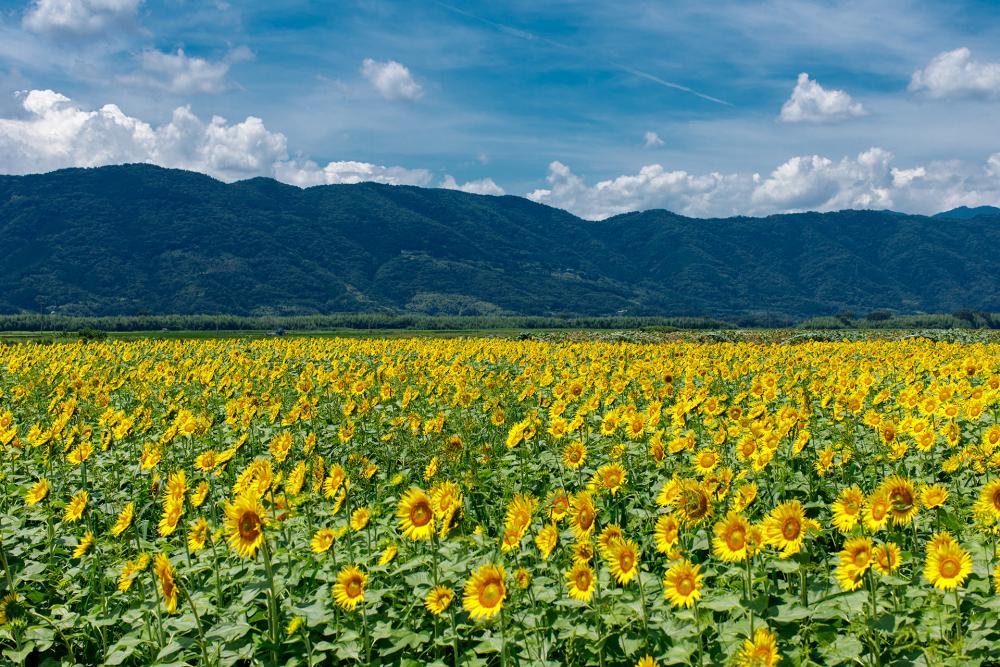
3km south from Kirihataji, in the middle of the Yoshinogawa river, Zennyuji-to is the biggest inhabited river island in Japan. Located about 30km from the river mouth, the island is a huge 500 hectare sandbar on which the municipal border between Awa city and Yoshinogawa city cuts across.
Until a little over 100 years ago, 500 houses and three thousand people would reside on the island, but today the entire land is uninhabited and has become farmland producing rice, various vegetables and flowers.
In Summer, big patches of sunflower fields appear on this island. Local farmers peppered fallow areas with sunflower seeds as a way to beautify the landscape.
The fresh yellow flowers are uninterrupted and gain the maximum exposure to sunlight.
The sunflowers on Zennyuji-to island immediately became a summer hot spot, as visitors can easily take postcard-perfect photos of the shining carpet of sunflowers with idyllic paths between rice fields and green mountains behind them.
A big bonus point is there are no transmission towers or electric wires to ruin the photos.
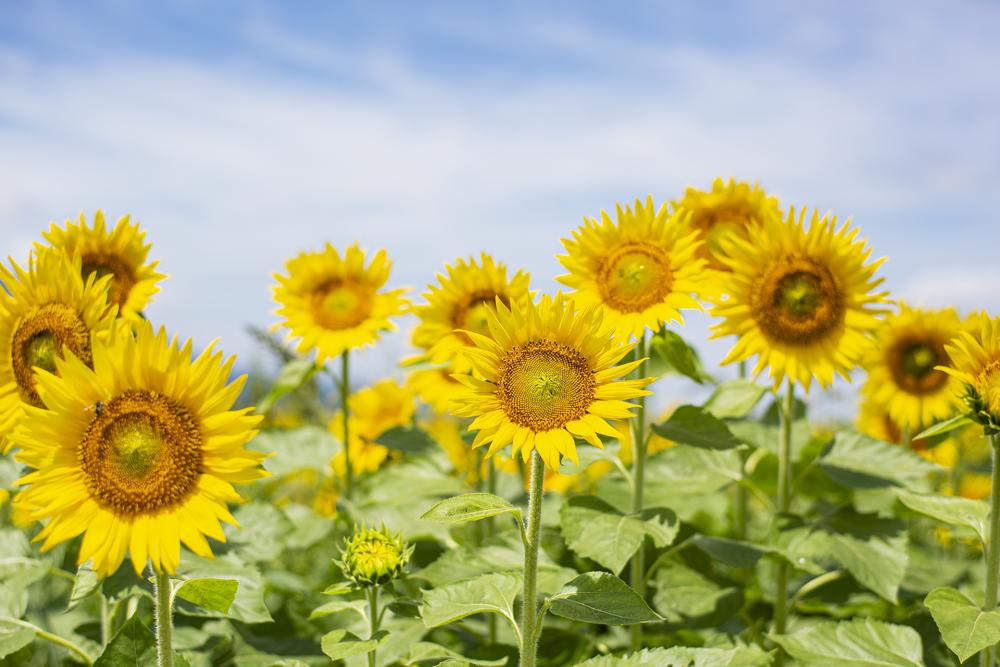
Kawashima Sensuikyo (submersible bridge)
There is another significant thing about Zennyuji-to island. It has five “sensuikyo” bridges connecting the island to both side of the Yoshinogawa. Sensuikyo, also known as chinkabashi, are submersible bridges which cross the river at a much lower height than regular modern bridges and doesn’t have side rails.
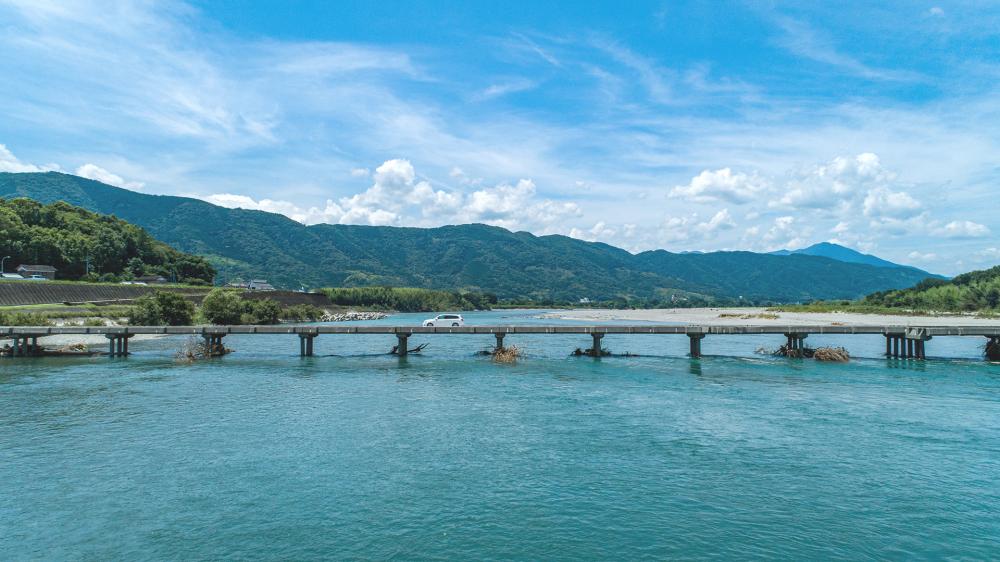
The unique structure of the bridge is meant to allow water and debris flow over it when in flood and reduce the risk of being washed away.
Yoshinogawa river used to be one of the three most dangerous rivers in Japan from old times, repeatedly causing terrible floods to destroy the watershed farmlands and villages.
Now, thanks to continuous flood prevention projects, such sensuikyos have been replaced with regular bridges and can be seen only a few areas in Shikoku. The bridges give you a glimpse of local lives here in the old days.
Standing on a sensuikyo, the water is much closer to you, enabling you to see the shining pebbles at the bottom. The narrow bridge is only 3m wide, barely fitting a standard-sized car.
Unexperienced drivers from urban cities often get worried as there is no space to pass another car. Local drivers is usually accustomed to stop in front of the bridge and make sure no car is coming from the opposite side. A couple of parts on the bridge are widened a little, enough for pedestrians to pass.
When the water level rises from long rains and typhoons, the Sensuikyo bridges get submerged.
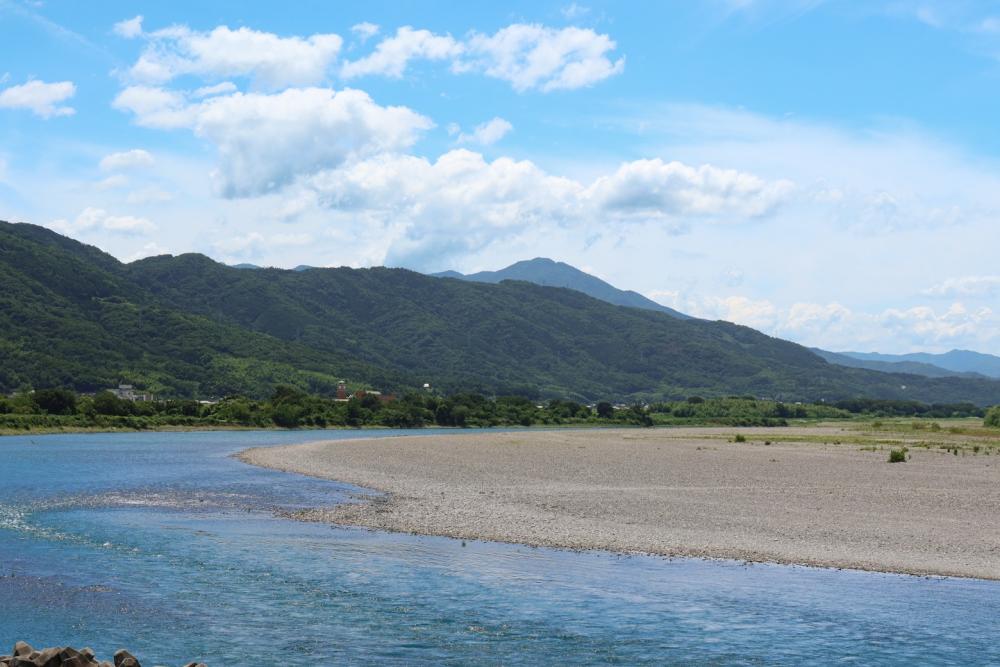
Of all five sensuikyos around Zennyuji-to, the most well-known one is Kawashima Sensuikyo, located in the east part of the sandbar on the Yoshinogawa city side.
Crossing Zennyuji-to island and then Kawashima Sensuikyo is also the most-commonly-used Shikoku pilgrimage route. It is so photogenic that pilgrims in white cloths and sedge hat walking on the traditional bridge stand out.
Suijin-no-taki falls
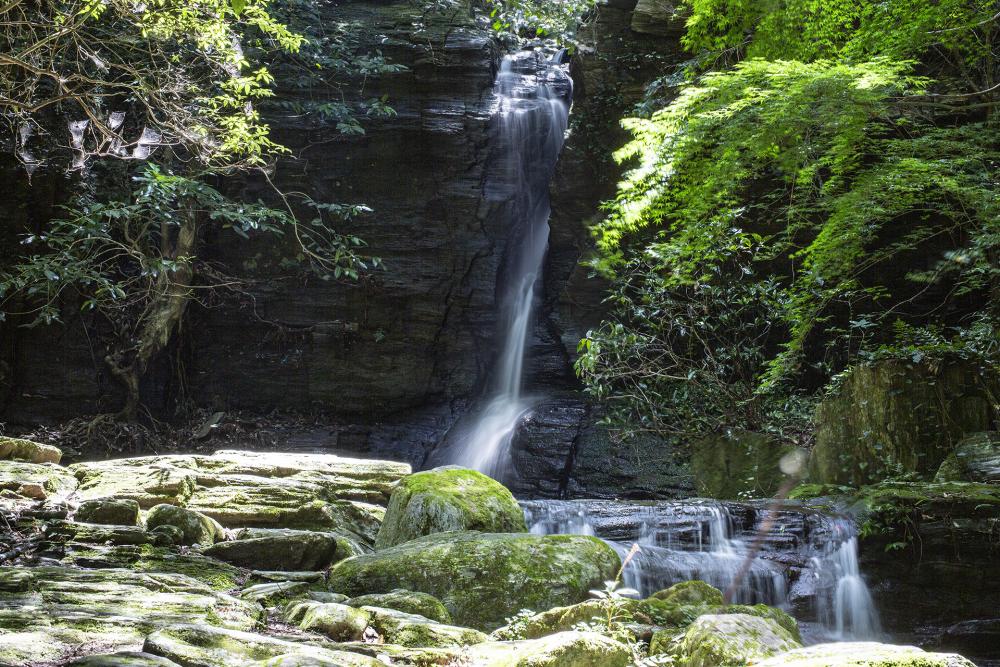
After sunbathing in the Zennyuji-to area, let’s go to some nearby waterfalls for cooling-down and relaxing.
Suijin-no-taki (the god of water) is a two-tiered waterfall near Uezakura park in the Kawashima-cho area of Yoahinogawa city. There is a short walking trail to the waterfall from Zennyuji-to island, 15 minutes drive via R-192.
It’s an easily accessible beauty of nature yet with a remote and hidden atmosphere.
The trail to the waterfall of the god of water goes through lush green valleys for 500 meters or so. Soon, the sound of water hitting rocks starts echoing and the 17 meters high waterfall appears. This lower tire is Odaki (male fall) of Suijin-no-taki standing in front as if hiding his female partner from onlookers.
A information board standing by the viewpoint of the waterfall says this place was featured in a nationwide hit movie, titled “Bizan.”
The trail continues to the left side of the male fall, up to the viewing bridge in front of the female fall. Compared to the awe-inspiring male fall, the more elegant-looking lady waterfall is gracefully flowing down cliffs on the upper tier.
The trail goes on even further and eventually connects to the prefectural road R-242 for those who would like a longer hike.
Minshuku Awarakuya
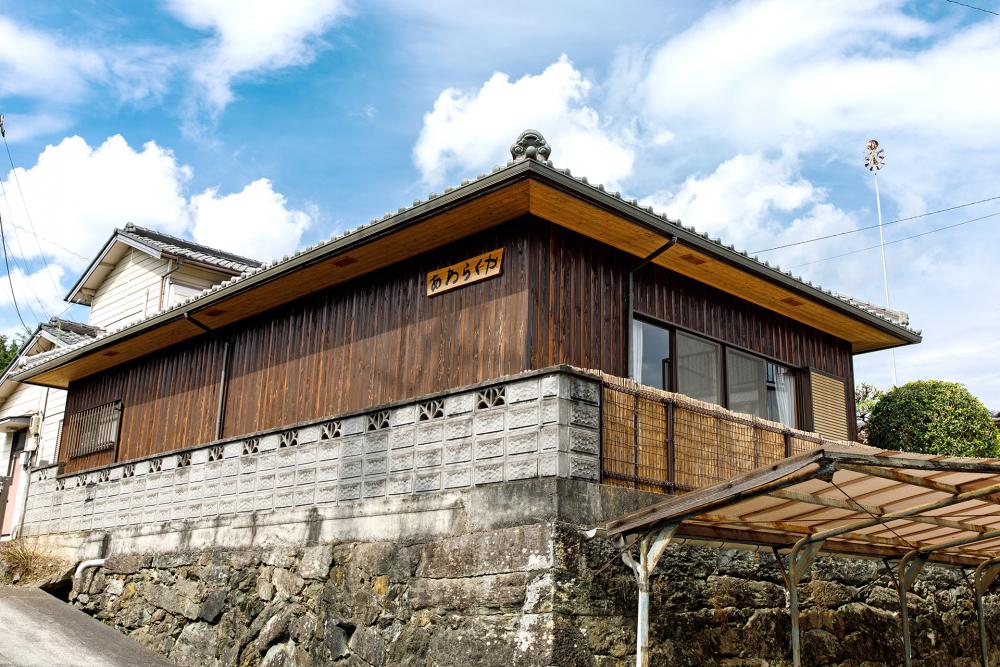
Located by the restored Kawashima castle in Yoshinogawa city, Awarakuya is a new minshuku (Japanese style guest house) opened 3 years ago.
The owners renovated extra unused rooms in their house and turned them into cozy traditional Japanese-style rooms with sunlight-filled hallways facing the garden.
Tokushima’s signature products such as indigo dye and Japanese cedar trees were used as interior accessories.
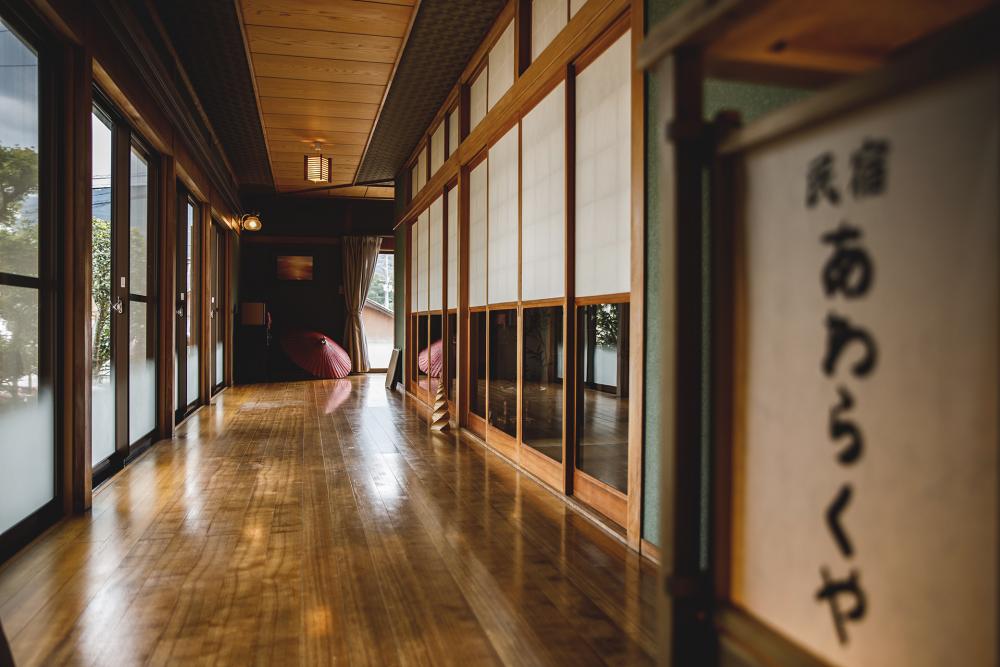
The dining room has a bar counter for guests to try many kinds of Ume plum sake hand-brewed in the Misato area, very popular local specialties of Yoshinogawa city.
The owners intentionally made the dining room clock-free for guests to fully get relaxed and enjoy their time here without interruption.
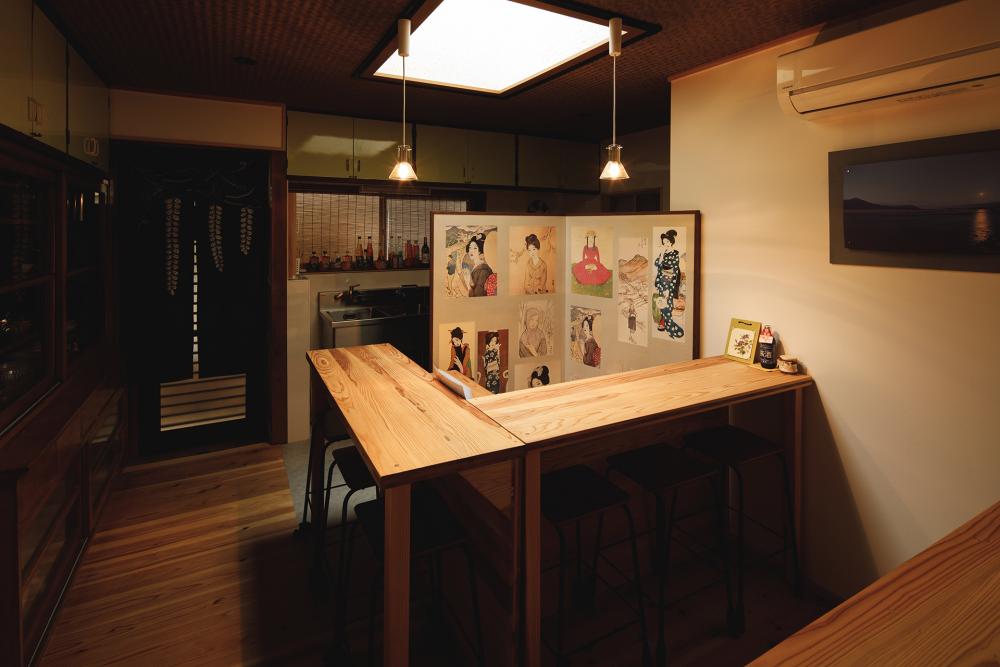
“When guests stay here to be able to visit many nice places in and around Yoshinogawa city, that makes me really happy,” said Akiyo Nakayama, the owner of Awarakuya.
Even if you are a local Tokushima resident, staying at Awarakuya is still recommended for you to discover something new about your hometown that you didn’t know before.
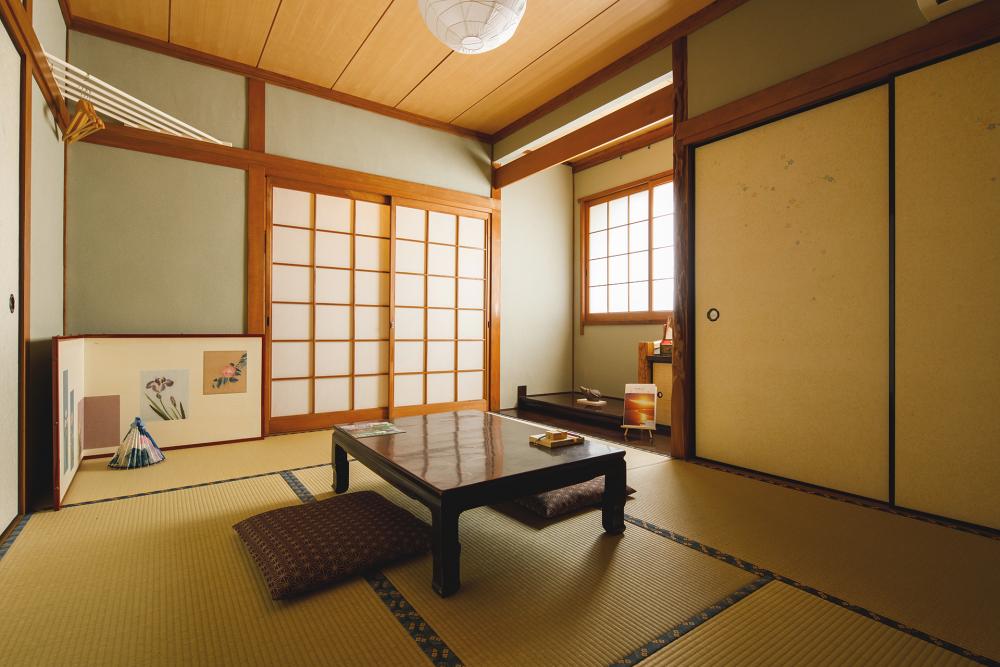
■Minshuku Awarakuya
178 Kawashima, Kawashima-cho, Yoshinogawa, Tokushima
Tel: 0883-25-3699
http://wwwe.pikara.ne.jp/awarakuy
Iwa-no-Hana Observation Deck
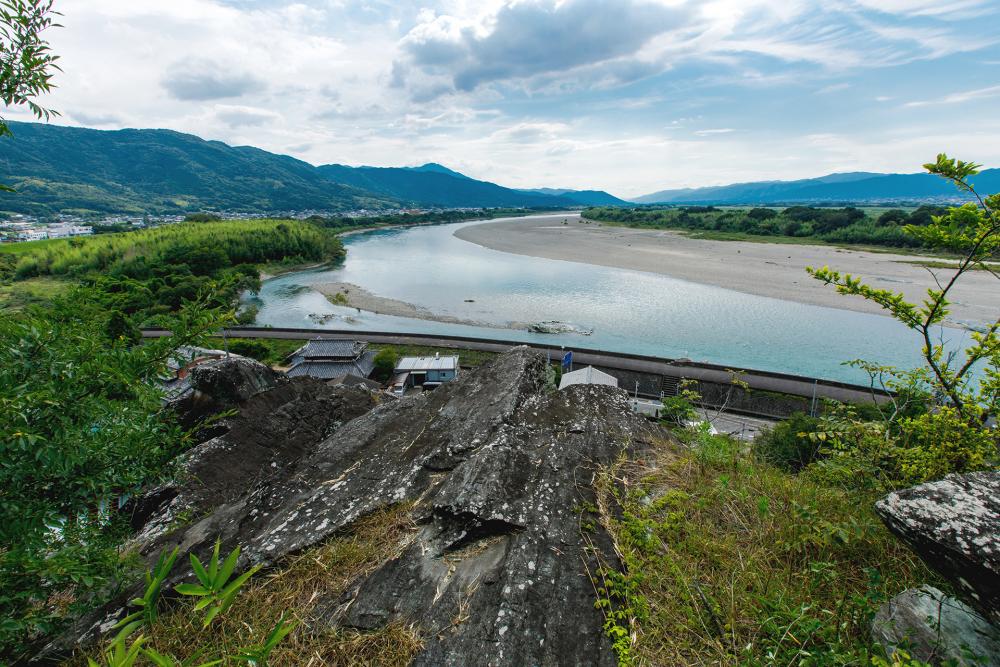
After a good night sleep at Awarakuya, your morning walk should include a trip to Iwa-no-hana observation deck, conveniently located on the hill right behind the minshuku.
This site has been selected as one of the best spots to overlook the most stunning view of Yoshinogawa river. There is nothing standing between you and the panorama of the beautiful river, mountains, and the sky. Open your arms, and breath in to absorb the fresh morning air.
Allegedly, the Kawashima castle’ honmaru (the castle keep) used to stand here. Imagine, the samurai lords and soldiers back then saw the same view as you watch now.
On the way back to Awarakuya, walking through Kawashima shrine and the restored castle is highly recommended to complete your perfect history-tracing morning walk.
Fujiidera, the 11th temple of Shikoku 88 Temples Pilgrimage
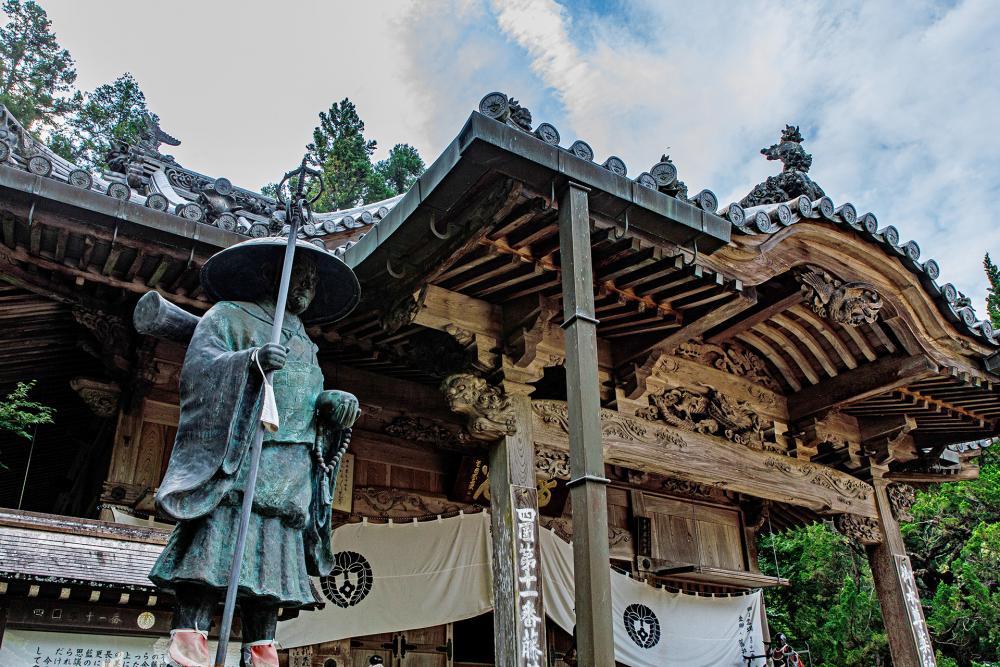
Fujiidera temple is known for an ancient tree of Japanese wisteria which, a legend said, Kukai, the founder of Shingon sect of Japanese Buddhism and the iconic figure of Shikoku pilgrimage, planted there by himself.
Fujiidera is also a very rare Rinzai sect Zen temple among the predominantly Shingon sect temples of the Shikoku pilgrimage.
Furthermore, what makes this temple’s name so talked about among pilgrims and hikers is its role as the trailhead of the 13 kilometers mountain trail to the next temple, T12 Shosanji.
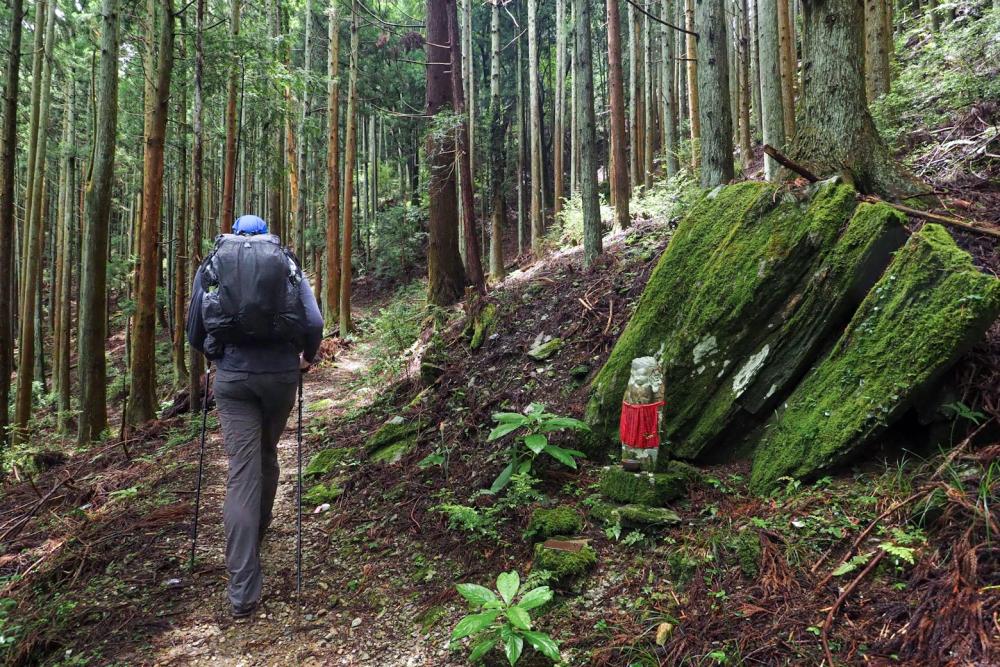
No one disagrees that this part of the entire Shikoku pilgrimage trail is the hardest and most challenging. Not only the length of walking through deep mountains, it has total six of Henro-korogashi, the long stretches of especially steep and rough inclines, to overcome to reach the goal.
Usually a regular adult needs 6 to 8 hours to walk this route in one go.
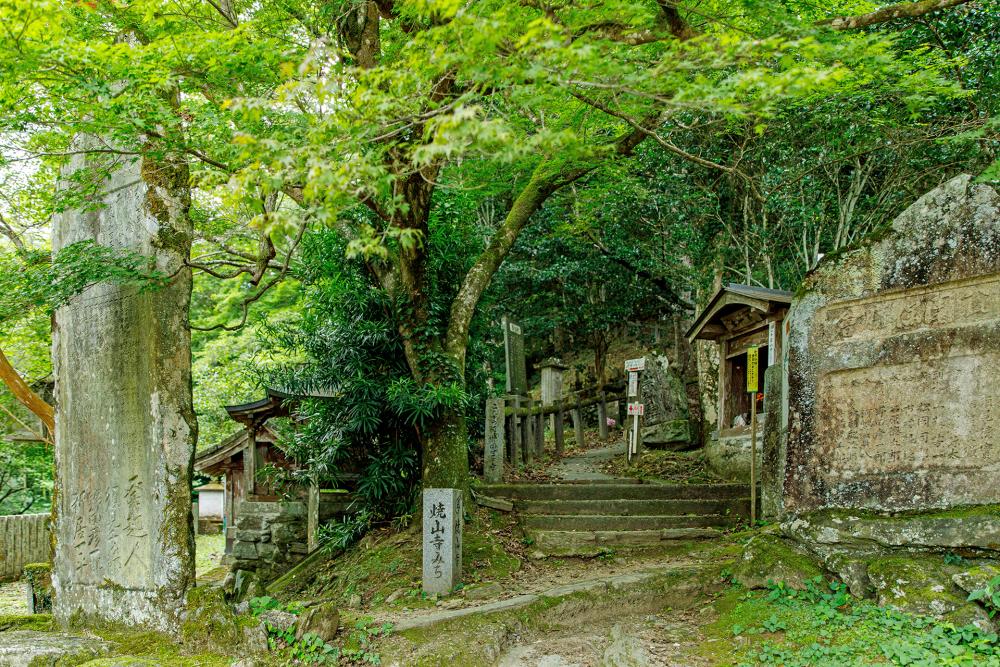
The mountain trail starts from the statue of Kukai standing by the main hall of the temple.
Multiple signs are put around the trailhead, some are indicating the direction, and some are cautious reminder to the challengers if they are fully prepared.
One sign is even asking if you need to go to the bathroom. It may sound too much mothering but not all pilgrims are experienced hikers and inevitably underestimate what kinds of conditions are waiting ahead.
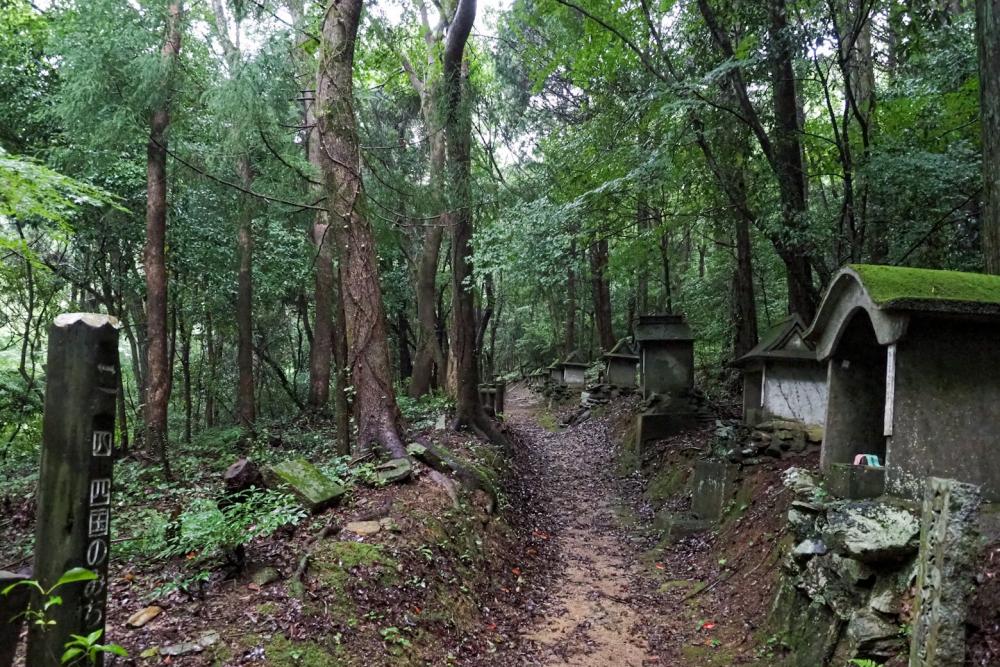
Shosanji is the second highest temple of all 88 temples of the Shikoku pilgrimage, located around the 8th station of the 938m high Mt. Shosanji.
To get to that height, hikers have to repeatedly ascend and descend several times. The 13km trail rarely cross regular roads and no shops or vending machines lie along the way.
It is a one full day hike, so you must carry all foods and drinks you need from the beginning and start walking in the early morning to avoid not making it to Shosanji before it gets dark.
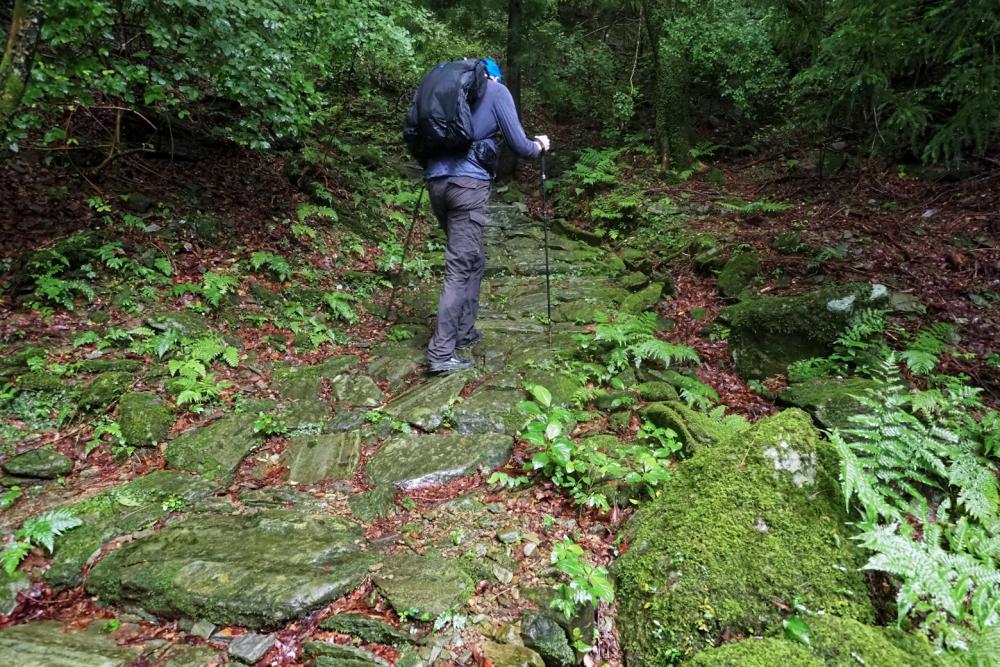
■Fujiidera, the 11th temple of the Shikoku 88 Temples Pilgrimage
1525 Inoo, Kamojima-cho, Yoshinogawa, Tokushima Tel: 0883-24-2384
https://88shikokuhenro.jp/11fujiidera/
